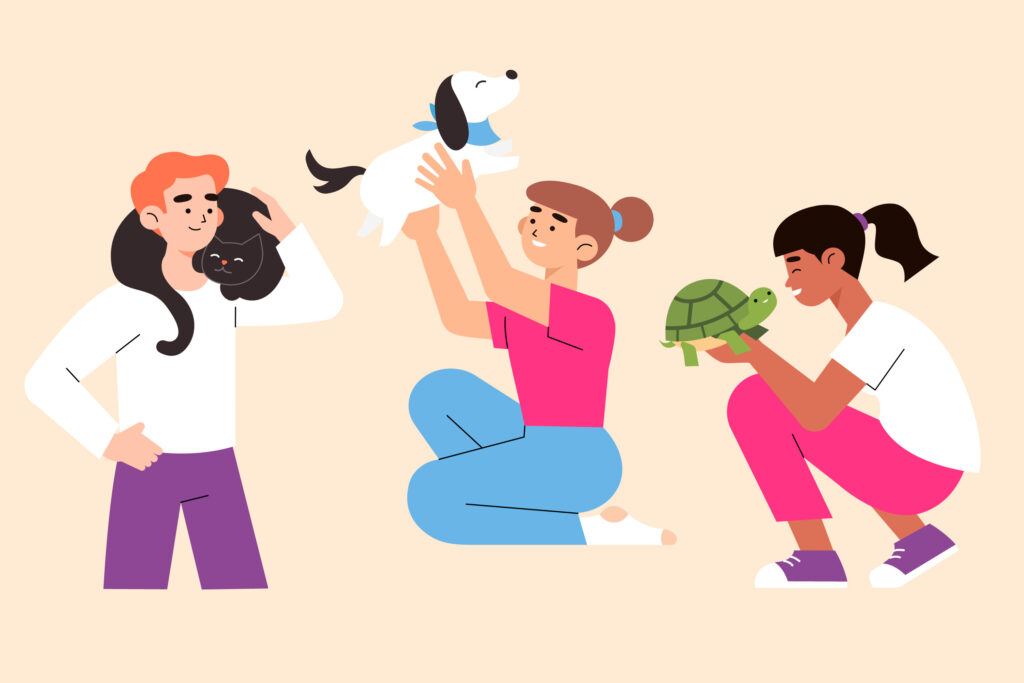
Mental health disorders among teenagers are on the rise, with conditions like anxiety and depression affecting many adolescents. One intervention that has shown remarkable promise is the companionship of pets.
How do pets benefit teens who may be struggling with mental health disorders? We’ll discuss them below.
Emotional Support and Companionship
Pets, whether dogs, cats, or even smaller critters like hamsters or birds, offer unconditional love and companionship. For teens dealing with mental health disorders, this constant and non-judgmental presence can be incredibly soothing.
The simple act of petting a dog or stroking a cat can release oxytocin, a hormone that fosters feelings of love and trust, helping to reduce feelings of loneliness and isolation.
Reduced Stress and Anxiety
Studies have consistently shown that interaction with pets can lower stress levels.
As mentioned previousl, the presence of a beloved animal can trigger the release of oxytocin, as well as serotonin, both of which contribute to feelings of calmness and happiness. Additionally, the rhythmic act of petting an animal can help regulate heart rate and lower blood pressure, providing tangible physiological benefits.
Encouraging Physical Activity
Having a pet encourages regular exercise, which also supports mental and physical well-being. Dogs, in particular, require daily walks and playtime, allowing teens establish a routine that involves going outside.
This increased physical activity has been linked to improved mood, reduced symptoms of anxiety and depression, and better health.
Read more: How Does Playing With Pets Affect Your Mental Health?
Responsibility and Routine
Caring for a pet necessitates a structured routine, which can be particularly beneficial for teens struggling with mental health disorders. Feeding, grooming, and exercising a pet on a regular basis instill a sense of responsibility and purpose. This routine can provide a stabilizing influence, helping to combat feelings of aimlessness and providing a sense of accomplishment.
Enhanced Social Interaction
Having a pet is an opportunity to socialize. Dogs, for instance, are known to be social creatures that enjoy interaction with other dogs and humans. Taking a dog for a walk or visiting a dog park can facilitate meaningful encounters with fellow pet owners, potentially leading to new friendships and support networks.
Increased Self-Esteem and Confidence
The unconditional love and positive reinforcement provided by pets can significantly boost a teen’s self-esteem. The act of caring for a living being and seeing positive results from that care can be incredibly empowering.
Moreover, the non-judgmental nature of pets creates a safe space for teens to express themselves authentically, which can lead to increased self-confidence.
Discover: Can Service Animals Help With Social Anxiety Disorder?
Distraction from Negative Thoughts
Pets have a remarkable ability to divert attention away from negative thoughts or intrusive feelings. Engaging with a pet in play or simply spending time in their company can provide a mental break from the challenges that teens with mental health disorders often face. This distraction can provide much-needed relief and perspective.
Conclusion
For teenagers grappling with mental health disorders, the companionship of a pet can serve as a source of comfort, support, and healing. With the right match and proper care, the bond between a teen and their pet can be a transformative factor in their journey toward better mental health.
Do you own an assistance animal? Register your pet today.
The Service Animal Registry of California invites you to have your assistance animal registered in order to designate its status. We also encourage you to take our online classes so you can be fully aware of your rights and gain more knowledge about your support animal.
Finally, we present to you our book entitled, “ASSISTANCE ANIMAL LAWS: LEARN YOUR RIGHTS REGARDING SERVICE ANIMALS, EMOTIONAL SUPPORT ANIMALS, THERAPY PETS, AND OTHER DOGS, CATS, AND ASSISTANCE ANIMALS” to provide you with a complete education on assistance animals.
Purchase your copy of the book by clicking the image below.

